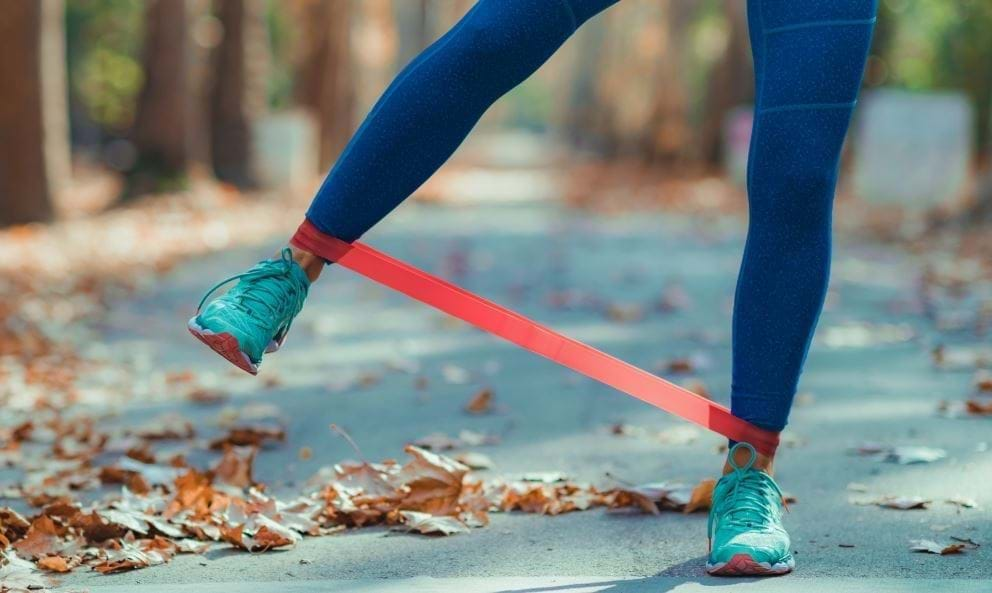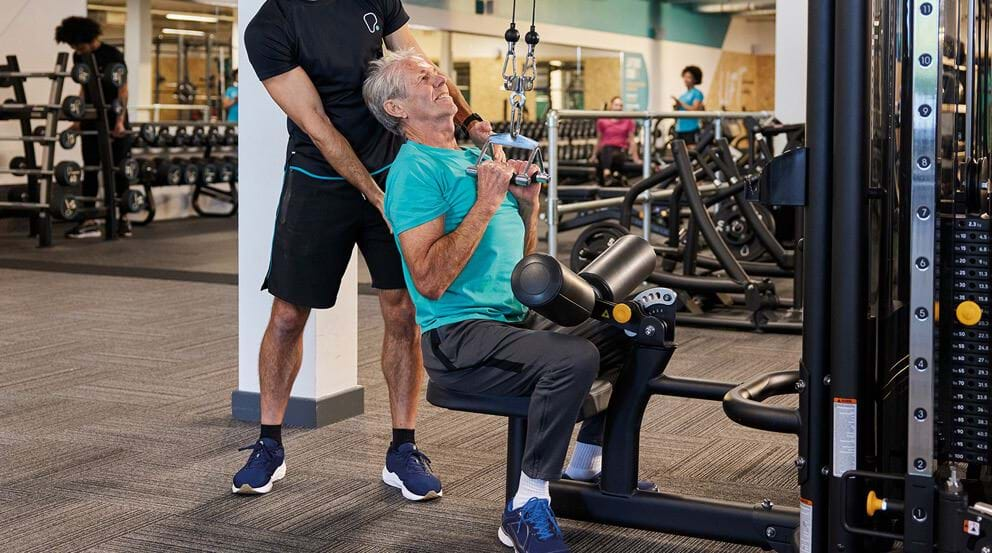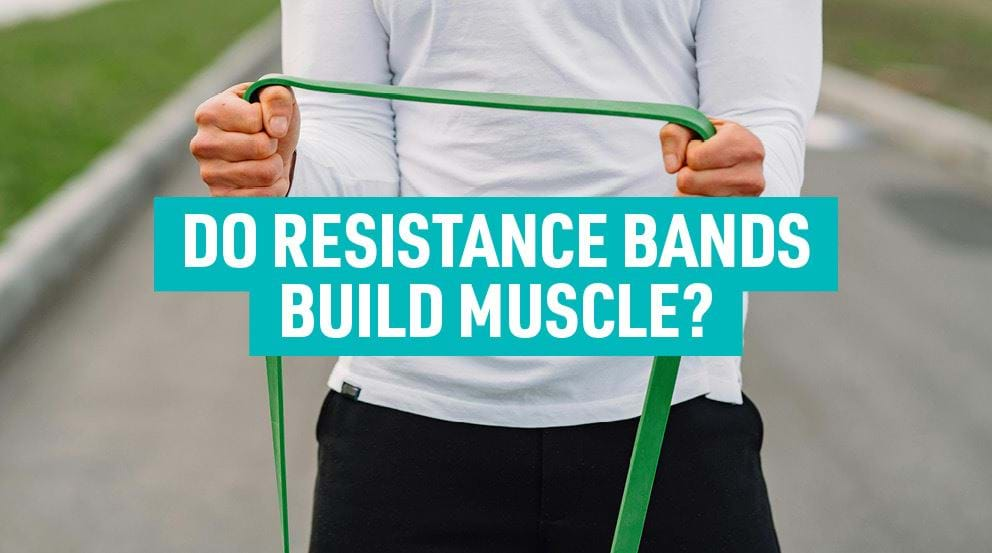Resistance Bands Exercises For Beginners

If you're looking for workout equipment that is versatile, effective, and can be used anywhere, look no further than resistance bands. There are various types of resistance bands available, including:
- Short bands (commonly used for leg and glute exercises)
- Long bands (often used for assisted pull ups)
- Bands with handles (great for replicating cable machines in a home environment)
- Therabands (often used with rehabilitation exercises)
Within these categories, resistance bands also come in different levels of resistance. The more resistance a band provides, the more it challenges the muscles. Having the different levels of resistance available allows you to regress or progress exercises, which makes them a valuable workout tool for beginners.
PureGym Barnstaple based Personal Trainer Hayley Chapman shares some of the reasons to include resistance band exercises in your workouts. She's also designed a lower body resistance band workout plan for beginners that you can try at home or in the gym.
The benefits of resistance band workouts for beginners
With dumbbells, barbells, cable machines, and fixed resistance machines available, why opt to use resistance bands for your workouts?
They are affordable. Resistance bands are very low cost, especially when compared to weights like dumbbells. If you enjoy home workouts, buying a variety of resistance bands is a cheap way to do strength training.
They can be used anywhere. Whether you want to workout on your holiday, or do mobility exercises in your office, resistance bands are small and light so they travel well -- and they can be stored in small spaces.
They're great for both beginners and advanced lifters. Varied levels of resistance means that resistance bands can be used by almost everyone! No matter how experienced you are, they can add an extra dimension to your workouts.
They can be used to progress exercises. For those who prefer to use free weights, resistance bands can be added to the movement to make it even more challenging. For example, a short resistance band wrapped above the knees makes squats and glute bridges more challenging as you have to drive your knees out against the resistance band which recruits the gluteus medius and abductors more. Long bands can also be used to make body weight exercises like press-ups more challenging, by taking the band around the back and placed under the hands.
They can help to regress exercises. Resistance bands can help to make difficult movements more accessible, too. For example, long resistance bands can assist with pull ups.
They're great for warmups. Warming up before a workout helps to prepare your muscles for movement, and it's a great way to improve your mobility and prevent injuries. Incorporating resistance bands in your warmup is a great way to get blood flowing through the muscles. It can also help you to really focus on "activating" the muscle and improving your mind-muscle connection so that you can recruit it properly when working out.
They can be used for more than just strength. Resistance bands are a great tool for building strength, but they can also be used to help improve your mobility and flexibility, and to help with rehabilitation.
They can help recruit the stabilising muscles more. By adding a short band above the knees for certain leg and glute exercises, you can help work your hip stabilising muscles more. The same can be done for the shoulders, for example by adding a short band above the elbows and performing lateral plank walks.
Beginners' resistance band workout
If you're looking for a resistance bands beginners lower body workout, look no further. All you need is short resistance bands and you're good to go! For each exercise, aim for 6-12 reps for 2-3 sets, making sure the amount of reps and sets is challenging. Once you have worked up to 3 sets of 12 reps using the highest resistance band you have, you can progress the exercise.
This workout can also be used by intermediate and advanced lifters as a warmup to activate the lower body muscles; in this situation, you'll only need to perform one set of 10 reps per exercise.
Banded Squats to Box/ Chair
- Step into your short resistance band on and place it around your thighs just above your knees.
- Stand in front of a box or chair. The lower the height, the harder this exercise will be.
- Engage your core and stand straight with your shoulders back and down, feet shoulder width apart, and your toes turned slightly outwards.
- Push your hips back and down as if you were about to sit on the box or chair, stopping once you are touching the surface without fulling sitting down. Breathe in as you move down.
- Push through your feet to drive yourself back up to starting position. Breathe out as you can come to standing.
- Make sure your knees stay in line with your toes, rather than collapsing inwards. Your feet should remain flat in the floor throughout the movement.
Banded Glute Bridge
- Place a short resistance band just above your knees.
- Lie down on a mat, feet flat on the floor at shoulder width apart, and knees bent so they are facing the ceiling. Your knees should be inline with your toes.
- Your lower back has a natural arch. Push your lower back into the mat so your whole back is flat on the floor and draw in your belly button to engage your core.
- ush through your heels to drive your hips up towards the ceiling until your knees are at a 90-degree angle and your shins are vertical with the floor. As you reach the top of the movement, squeeze your glutes.
- Slowly reverse the movement until your back is flat on the floor.
Banded Crab Walks
- Start with a short resistance band above your knees.
- Stand with your feet shoulder width apart, toes pointing slightly out, and knees in line with your toes.
- Squat down into a half squat. You'll hold this position throughout the exercise.
- Take a wide step to the right, into a sumo squat.
- Step your left foot in so that you are back to a regular half squat position.
- Repeat for the number of reps, and then switch directions.
Banded Standing Hip Extension
- Place the resistance band around your thighs just above your knees.
- Stand up straight with your feet hip width apart, keeping your hips tucked under your shoulders to prevent you from leaning forward.
- Holding on to something for support (a wall or chair will do), slowly push one leg straight out behind your glutes. Your weight bearing leg should have a slight bend in the knee.
- Pause before returning your leg to starting position. Repeat for the number of reps and then switch sides.
Banded Standing Hip Abduction
- This exercise is similar to above, but instead of pushing the leg back, you take it out to the side.
- You'll need to keep a slight end in the knee of the leg that is moving.
If you want to progress these resistance bands exercises for beginners without adding weights, you can increase the resistance of your band (doubling up on bands is a great way to add more resistance if you're already using your heaviest), add in a pause, or slow down the tempo of the exercises.
As you get more confident with resistance band exercises, you may want to incorporate weights into your workouts. Dumbbells are perfect for beginners who want to start using free weights. Why not try our full body dumbbell only workout, or download the free PureGym app for access to over 600 workouts.


